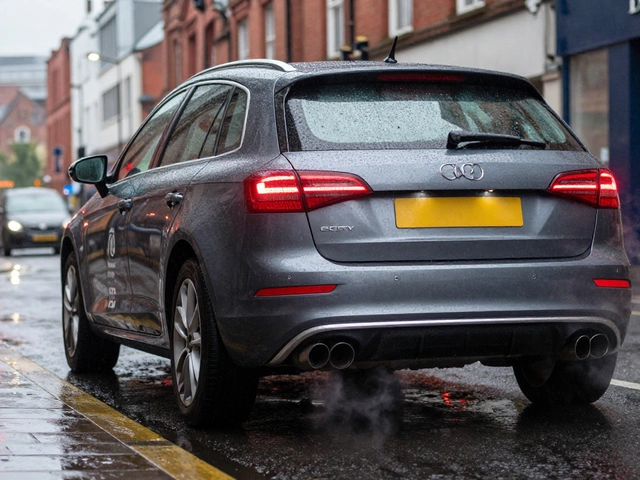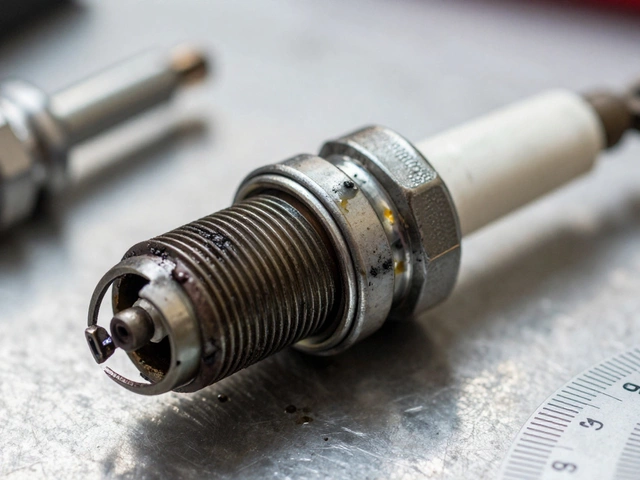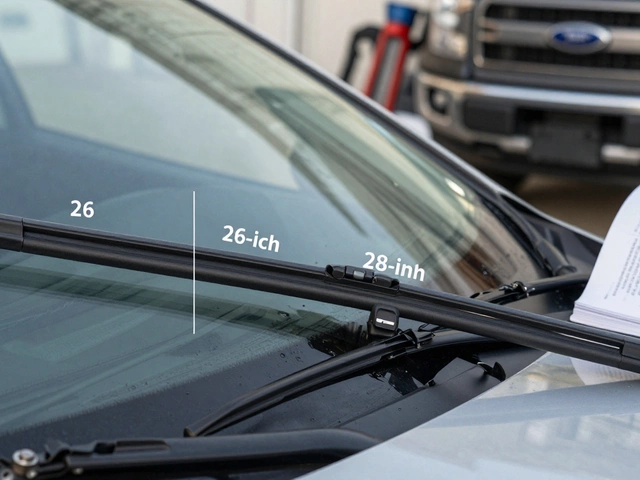Brake Pad Wear Diagnostic Tool
Diagnostic Questions
Answer these questions to determine if your front or rear brake pads are wearing out
Noise Symptoms
Pedal Feel
Vehicle Behavior
Driving Habits
Diagnostic Result
Ever heard a squeal or grinding sound when you hit the brakes and wondered if it’s the front or back pads giving out? Most drivers assume it’s the front-after all, they do most of the work. But here’s the truth: sometimes, it’s the rear pads that are the problem, and ignoring them can turn a cheap fix into a dangerous one.
Why front and rear brake pads wear differently
Your car’s front brakes handle about 70% of the stopping power. That’s because when you brake, your weight shifts forward. The front rotors and pads take the brunt of the force. Rear brakes? They’re mostly there to help balance the system and keep the car stable, especially in wet conditions or during emergency stops.That’s why front brake pads usually wear out two to three times faster than the rear ones. But that doesn’t mean the rear ones are safe to ignore. If your rear pads are worn thin, your car might pull to one side, the brake pedal might feel spongy, or you could hear unusual noises only when braking lightly.
Listen for the noise
Brake pads have metal wear indicators built into them. When the friction material gets too thin, these indicators scrape against the rotor. That’s what makes the high-pitched squeal.Here’s how to tell where it’s coming from:
- If the squeal happens mostly when you brake gently-like slowing down for a stop sign-it’s likely the front pads. That’s when the front brakes are doing most of the work.
- If the noise is louder when you’re braking at low speeds with the parking brake engaged (yes, try this safely in an empty lot), or if it’s more of a grinding sound during normal stops, it could be the rear pads. Rear pads often wear unevenly and can develop grooves that catch on the rotor.
Some cars have different types of wear indicators. On older models, you might hear a metallic clunk instead of a squeal. On newer ones, the car’s computer might show a warning light. But if you’re hearing noise and no light is on, trust your ears.
Feel the brake pedal
Pay attention to how the brake pedal feels. If it’s mushy, sinks closer to the floor, or needs more pressure than usual, that’s a sign of wear-but not always front or rear.Here’s how to narrow it down:
- If the pedal feels fine at first but gets soft after a few hard stops, your front pads are likely overheated and worn thin.
- If the pedal feels fine during normal driving but becomes noticeably softer when you apply the parking brake, your rear pads are probably the issue. The parking brake often acts directly on the rear brakes, so if they’re worn, you’ll feel the difference when you use it.
Also, if your car pulls to one side when braking, that’s usually a sign of uneven wear. But again-front or rear? If the pull happens only during light braking, it’s likely the rear. Front brake issues usually cause pulling during hard stops.
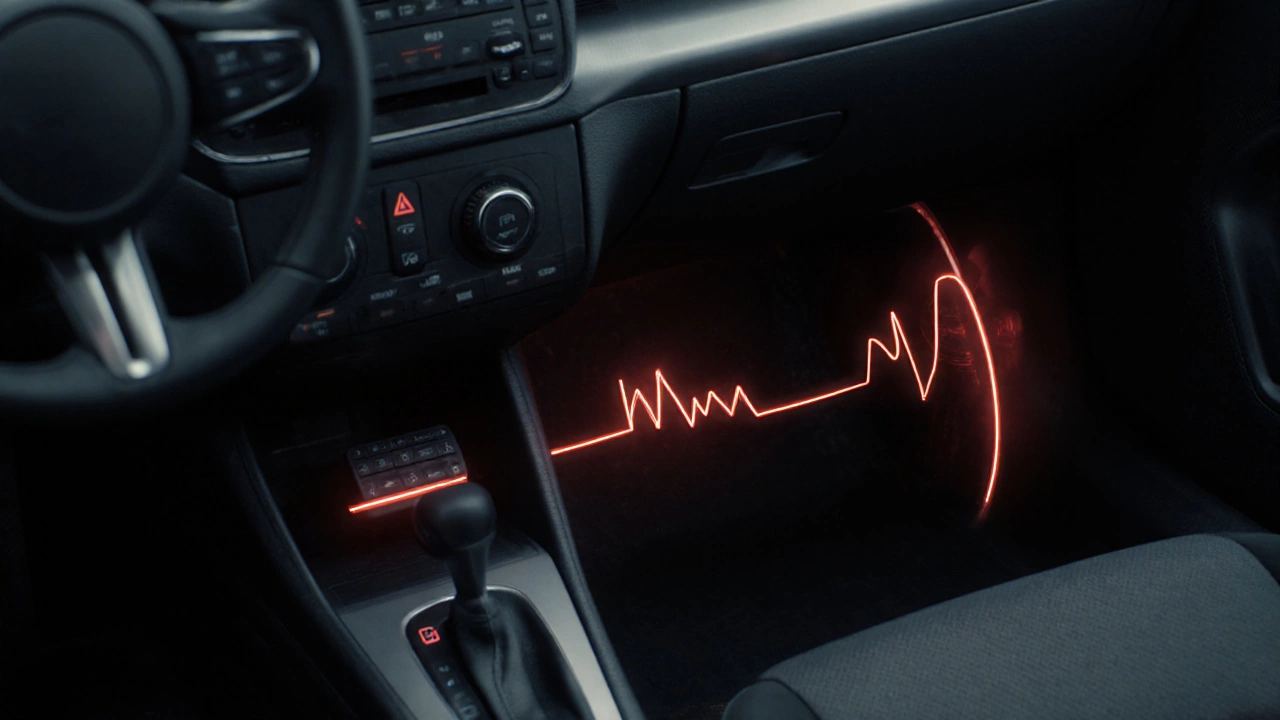
Check for visual signs
You don’t need to be a mechanic to peek at your brake pads. Just lift the car safely on jack stands, remove a wheel, and take a look.Front pads are easier to spot. Look through the spokes of the wheel. If you can see more than 3mm of friction material left, you’re okay. Less than 2mm? Replace them now. Less than 1mm? You’re risking damage to the rotors.
For the rear pads, it’s trickier. On many cars, especially sedans and hatchbacks, the rear brakes are drum-style or hidden behind a caliper that’s harder to access. If you’ve got disc brakes in the back, you can usually see the pads through the caliper. If they’re worn down to the metal backing plate, you’ll see shiny metal with no gray friction material left.
Here’s a quick visual guide:
| Sign | More Likely Front | More Likely Rear |
|---|---|---|
| High-pitched squeal during light braking | ✓ | |
| Grinding noise during normal stops | ✓ | |
| Brake pedal sinks to floor | ✓ | |
| Soft pedal only when using parking brake | ✓ | |
| Car pulls to one side during gentle braking | ✓ | |
| Visible wear under 2mm | ✓ | ✓ |
Driving habits tell the story
Think about how you drive. If you’re always braking hard at high speeds-like on motorways or in heavy traffic-you’re wearing down the front pads fast. If you’re mostly driving in town, stopping gently, and using the parking brake often, the rear pads can wear out faster than you think.One real example: a 2018 Honda Civic came in for a squeal. The front pads had 5mm left. The rear? 0.8mm. The owner didn’t realize the rear pads were even a thing. They’d been driving for 18 months with worn rear pads, thinking the noise was normal. By the time they got it checked, the rear rotors were scored. Cost to fix: £420. If they’d caught it earlier, it would’ve been £180.
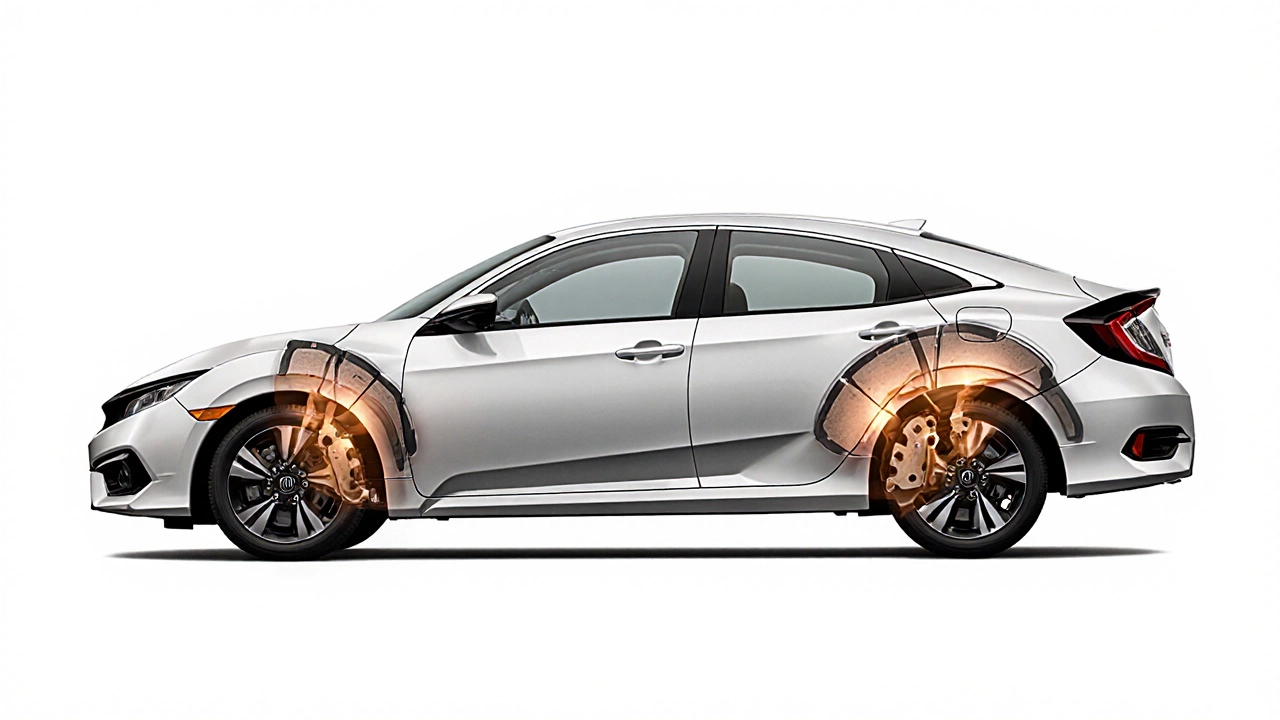
What to do next
Don’t wait for the warning light. Most cars don’t even have rear brake wear sensors. You need to check manually.- Every 10,000 miles, visually inspect your front pads through the wheel spokes.
- Every 20,000 miles, get the rear pads checked-especially if you hear odd noises or feel changes in braking.
- Replace pads in pairs: front or rear, never just one side.
- Always replace rotors if they’re scored, warped, or thinner than the manufacturer’s minimum thickness.
Brake pads aren’t something you can guess on. A worn rear pad can cause your car to fishtail during emergency stops. It’s not just about cost-it’s about safety.
When to call a pro
If you’re not comfortable lifting your car or removing wheels, don’t risk it. Brakes are critical. A professional can check both front and rear pads in under an hour. Many garages offer free brake inspections. Use them.And if you’ve already replaced the front pads and the noise is still there? That’s a red flag. The rear pads are likely the culprit. Don’t assume the problem’s fixed.
Can rear brake pads wear out before front ones?
Yes, especially if you drive mostly in the city, use the parking brake often, or have a vehicle with rear drum brakes. While front pads take most of the load, rear pads can wear faster due to uneven pressure, lack of use, or poor adjustment. It’s rare, but it happens.
How often should brake pads be replaced?
Front brake pads usually last between 25,000 and 50,000 miles. Rear pads often last 50,000 to 70,000 miles. But it depends on your driving style, vehicle weight, and brake system design. Check them every 10,000 miles if you drive daily.
Is it safe to drive with worn brake pads?
No. Worn pads reduce stopping power and can damage rotors. If you hear grinding, you’re already metal-on-metal. That means you’re not just replacing pads-you’re replacing rotors too. At that point, your brakes are unsafe.
Do all cars have rear disc brakes?
No. Many economy cars and older models use rear drum brakes, which are harder to inspect without removing the wheel and drum. If your car has drums, it’s even more important to get professional inspections every 20,000 miles.
Can I tell which pads are worn by the sound alone?
You can make a good guess. Front pads usually squeal during light braking. Rear pads often grind or make a clunk during normal stops, especially if the parking brake is engaged. But sound isn’t foolproof-always check visually or have a mechanic inspect them.





